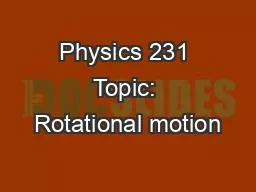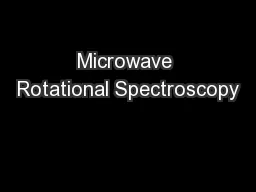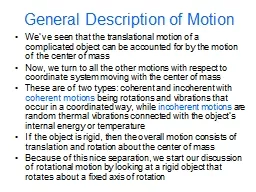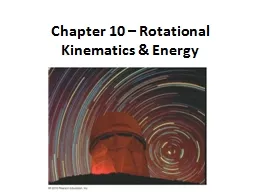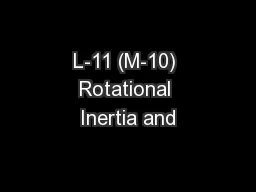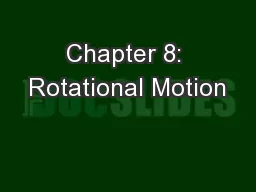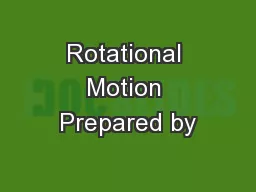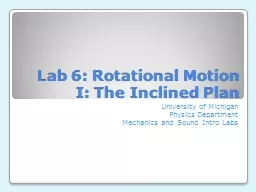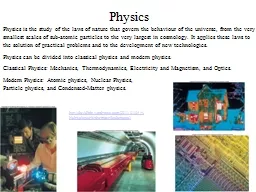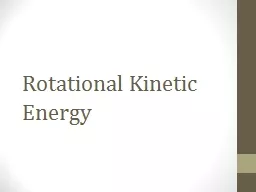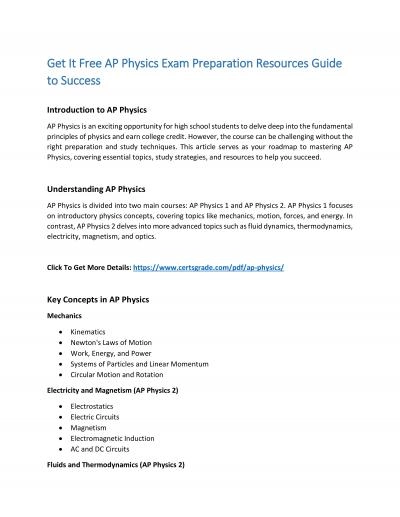PPT-Physics 231 Topic: Rotational motion
Author : kaptainpositive | Published Date : 2020-06-22
Key Concepts For each translational motion quantity position velocity acceleration force mass momentum kinetic energy there is a rotational quantity Same equations
Presentation Embed Code
Download Presentation
Download Presentation The PPT/PDF document "Physics 231 Topic: Rotational motion" is the property of its rightful owner. Permission is granted to download and print the materials on this website for personal, non-commercial use only, and to display it on your personal computer provided you do not modify the materials and that you retain all copyright notices contained in the materials. By downloading content from our website, you accept the terms of this agreement.
Physics 231 Topic: Rotational motion: Transcript
Download Rules Of Document
"Physics 231 Topic: Rotational motion"The content belongs to its owner. You may download and print it for personal use, without modification, and keep all copyright notices. By downloading, you agree to these terms.
Related Documents

